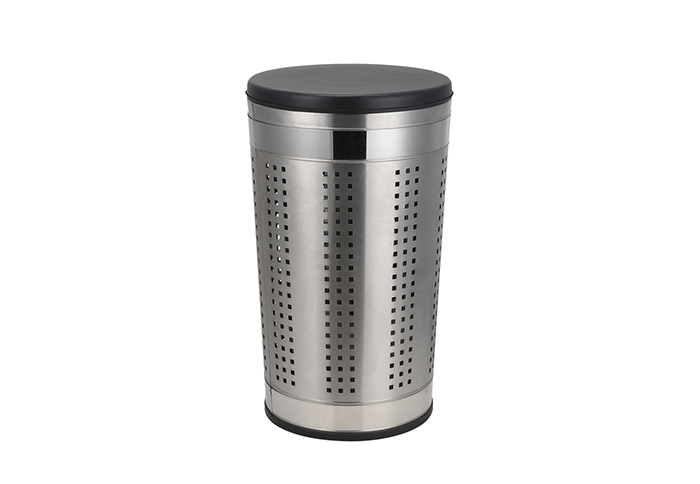Advantages of laundry bin?
Laundry Bins, often relegated to the corner of bedrooms or concealed in utility rooms, are an integral component of household organization and cleanliness. These unassuming receptacles serve a vital role in managing dirty clothes, linens, and other textiles, contributing to a well-organized and efficient laundry routine. In this comprehensive guide, we explore the multifaceted advantages of Laundry Bins, shedding light on their impact on cleanliness, organization, and the overall maintenance of a harmonious living space. Learn more about What is a Laundry Bin?

Advantages of Laundry Bins:
Centralized Dirty Laundry Collection:
The primary advantage of laundry bins lies in their ability to provide a centralized collection point for dirty laundry. Strategically placed in bedrooms, bathrooms, or utility areas, these bins serve as designated spaces for family members to deposit worn clothes, linens, and other washable items.
Organization and Tidiness:
Laundry bins play a key role in fostering organization and tidiness within the home. By offering a designated spot for dirty laundry, they prevent clothes from being strewn across floors or left in disarray. This contributes to a neater and more visually appealing living space.
Efficient Laundry Routine:
Having a dedicated laundry bin streamlines the laundry routine. Family members can easily locate and deposit dirty clothes, simplifying the process of sorting laundry before washing. This efficiency ensures that clean and dirty items are kept separate, expediting the overall laundry process.
Prevention of Unpleasant Odors:
Laundry bins, especially those with well-ventilated designs or breathable materials, help prevent the buildup of unpleasant odors associated with dirty laundry. Adequate ventilation allows air to circulate, reducing the risk of musty smells that can develop when clothes are left in closed hampers for extended periods.
Hygienic Storage of Dirty Clothes:
The hygienic storage of dirty clothes is a crucial advantage of laundry bins. Bins with washable liners or removable bags make it easy to maintain cleanliness and prevent the accumulation of bacteria or mold. This feature is particularly beneficial in homes where laundry bins are used for extended periods between washes.
Multiple Compartment Options:
Some laundry bins come with multiple compartments or dividers, allowing for the organized separation of different types of laundry. This feature is valuable for households that prefer to sort clothes by color, fabric type, or wash cycle requirements, contributing to a more efficient and tailored laundry process.
Aesthetic Integration:
Laundry bins are available in a variety of designs, materials, and sizes, ensuring that they can be seamlessly integrated into different interior aesthetics. Whether a sleek, modern design for a contemporary bedroom or a wicker basket for a more rustic vibe, laundry bins contribute to the overall aesthetic of a space.
Space Optimization:
Laundry bins are designed to optimize space within the home. Their varied shapes and sizes make them adaptable to different environments, including small apartments, spacious laundry rooms, or shared living spaces. Stackable or collapsible options further enhance space-saving capabilities.
Portable and Convenient:
Many laundry bins are designed for portability, featuring handles or wheels for easy transportation. This convenience is especially useful when moving clothes from bedrooms to the laundry area or when transferring clean laundry back to individual rooms.
Educational Tool for Children:
In households with children, laundry bins serve as educational tools for instilling responsibility. Teaching children to deposit their dirty clothes in the designated bin encourages good habits and contributes to their understanding of basic household chores.
Sustainability and Eco-Friendly Options:
The material choices available for laundry bins have expanded to include eco-friendly and sustainable options. Bins made from bamboo, recycled materials, or other environmentally conscious materials align with the growing emphasis on sustainability in household products.
Durability and Longevity:
Laundry bins are often constructed from durable materials such as plastic, canvas, or metal. This durability ensures that the bins can withstand the regular wear and tear associated with daily use, providing a long-lasting solution for managing dirty laundry.
Adaptability to Various Environments:
Laundry bins are versatile and can adapt to various environments within the home. Whether placed in bedrooms, bathrooms, or utility rooms, these bins fulfill their purpose without imposing on the overall design or functionality of the space.
Infection Control and Preventing Cross-Contamination:
In homes where there are individuals dealing with infections or illnesses, laundry bins contribute to infection control. Separating contaminated or soiled items in a dedicated bin helps prevent cross-contamination with other laundry items, maintaining a hygienic living environment.
Time-Saving Benefits:
The time-saving benefits of laundry bins are evident in their role in streamlining the laundry process. By providing a central location for dirty laundry, these bins eliminate the need to search for scattered clothes, ultimately saving time and reducing the effort required for laundry-related tasks.
Conclusion:
Laundry bins, often overshadowed by their more glamorous counterparts in the realm of home decor, quietly play an essential role in maintaining cleanliness, order, and efficiency in the modern household. Their advantages extend far beyond mere containment of dirty laundry, influencing organization, hygiene, and even educational aspects of daily living. As individuals continue to seek practical solutions that enhance their home life, the humble laundry bin stands as a beacon of functionality, offering a simple yet indispensable tool for the seamless management of one of life's most perpetual tasks.
